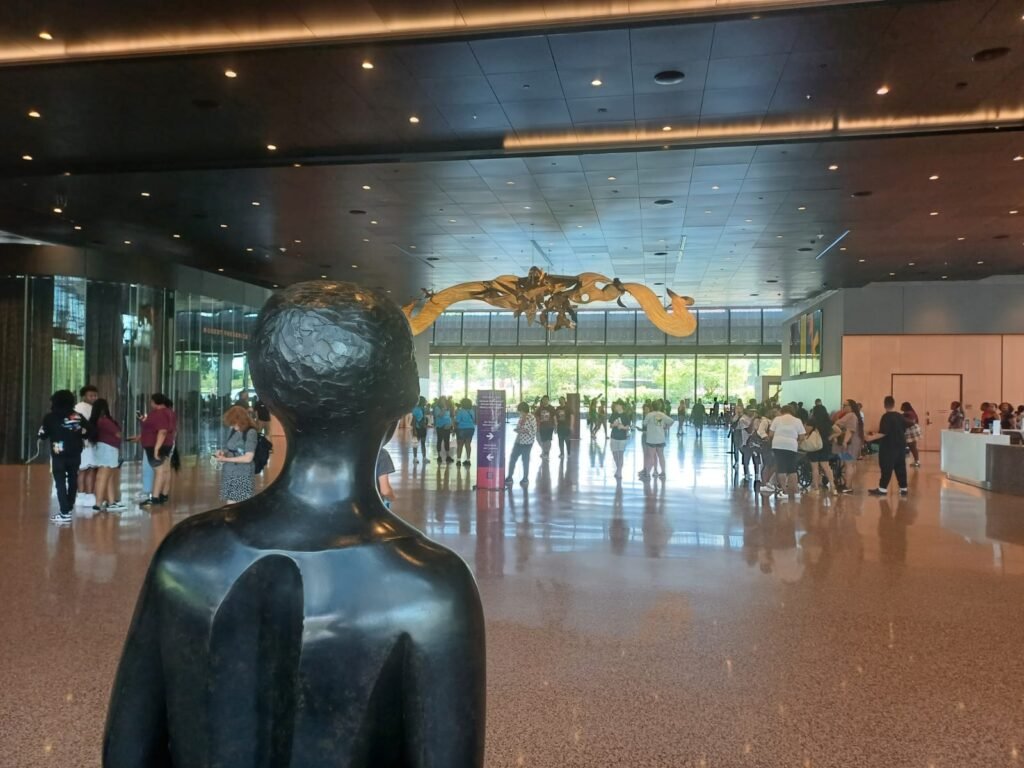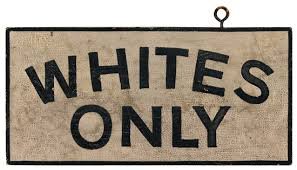I was lucky enough to visit this still-new monument to African and American history on a sultry-streaming day in Washington DC after attending the board meeting of EcoAg Partners. If you ever have the chance, go, embrace, feel and experience this extraordinary space.
First, it is a stunningly designed building, as you can see. It is ship-like, with eight floors, four below the ground. The conceptual approach is that you begin deep underground in the dark ages of slavery, eventually entering floors of more recent light, finally on top celebrating the enormous contributions of African Americans to the modern-day US.
This is not a typical museum. It doesn’t seek to make our experiences easy. It challenges us and probably how we are challenged is a result of the person we are and where we come from. I was reminded of the entrance at another excellent space, the Apartheid Museum in Johannesburg where you are invited to enter different by different doors according to the colour of your skin.
It was immediately noticeable how different the crowd was from most of the other Smithsonian Institutions (an organisation providing a huge range of free cultural experiences). Most museums are full of people who look like me, of a certain age, behaving in a certain way as we are taught. Quietly, with reverence, not touching, keeping a distance.
Not here. Large groups of school children, mostly of colour, ran around and made noise in the vast entrance hall.

Many African-American families. A large group of Chinese visitors. A few solo visitors, like me, couples with children. But I noticed my whiteness, something I am not usually challenged to do in cultural spaces in America. And I noticed the crowd was significantly younger than usual.
As I took the escalators deep underground, I asked myself the kinds of coaching questions we ask our clients: How am I feeling? What am I noticing? What am I trying to achieve here? What am I not willing to contemplate? What am I ignoring?
Four floors of darkness, human misery, and tales of enormous strength follow. The curators managed to convey the bigger picture, slavery and the role of White Americans and Europeans (although there were references to the inter-Africa slave trade, too) and then the profound impact of slavery on the lives of the slaves themselves and the owners, including of course Washington, Jefferson, Madison, Franklin and numerous other icons of the US Constitution. The three-fifths principle, high constitutional principles and the effect they had on the lives of a family in Alabama.
As far as I know, my ancestors were not directly involved in the slave trade. However, on the balance of probability, this probably means they were not in a position to directly benefit rather than they engaged in any principled opposition to it. However, as a Londoner, I am from a city that benefited hugely from the slave trade and what followed in terms of Empire. So, this history, in the underground gloom, stories of extraordinary resistance and excruciating pain, is part of my history too. And it feels like it.

My worst moment underground, a moment of somehow even more profound discomfort, was walking through an old, segregated railway carriage. Bad enough, a segregated space. But there was a sign on the luggage rack: ‘Whites Only.’ Even a few wooden racks had to be kept pure, uncontaminated by the suitcases of people of lesser blood. And I had to remind myself that this was 1950’s America, well within the lives of many, some of whom will have worked through this space and remembered.
At that moment, I thought of Obama’s portrait in another part of the Smithsonian just down the road. Only half a century after luggage was segregated on trains, an African American was elected to the highest office in the land. Remarkable, frightening, despair and joy. Of course, I know the battle is not over. The demonisation of other people who look or identify differently remains part of America’s and every nation’s journey today. It can also be the fault of someone else, someone different.
As a coach, as I moved up through the rooms with the more hopeful films and photos of the civil rights movement, I reflected on how we can be of service to clients who may be different in some way, not part of the power setup. How we can help clients navigate both very explicit discrimination (white luggage only) and the ever-prevalent, semi-hidden bias and prejudice that many feel daily in the workplace.
I noticed my breathing change as I rejoined the ground floor, sunlight filtering in through the darkened windows as if a burden had somehow been lifted. I noticed, too, that people emerging from underground looked relieved, were talkative, thoughtful, and provoked.
What does all of this darkness say about us as humans? About the untold misery and pain, we can so easily inflict on others. Not 300 years ago, not even 50. Israel, Palestine, Sudan, wars and lives destroyed. Ordinary people with dreams having their lives shattered.
The top floor of the museum is full of celebration of African American artists, actors, musicians, dancers and sportsmen and women. Here, you can look out at the Washington Monument and the green fields beyond, glance through windows providing different framings of America and its past and present and reflect on what all of this says about us as humans.
What role can coaching understanding play in the turmoil of our past and present? How can we ourselves make sense of it and help others to? First, we have to recognise it for what it is. We can’t ignore pain, prejudice, or inhumanity. Then, collectively, we must help navigate it, find a way forward, and look for connections and lessons of hope.
In far less dramatic ways than contemplating slavery, it’s what coaches do every day and is work with clients to manage their particular challenges at work, at home, in the community. Those who see the climate emergency as an existential threat and make them fear for their children’s future. Those who fight power structures and discrimination in the workplace because they are women, LGBTQ+, a person with a disability, and who come to coaching to navigate their world and their place in it.
Most museums inspire moments of reflection, searching, doubt, and inspiration. But this one is full of deep contradictions, the whole spectrum of what it means to be human, to have and abuse power, and to resist injustice. It was a transformational experience, and I hope it will make me a better coach.




No comment yet, add your voice below!